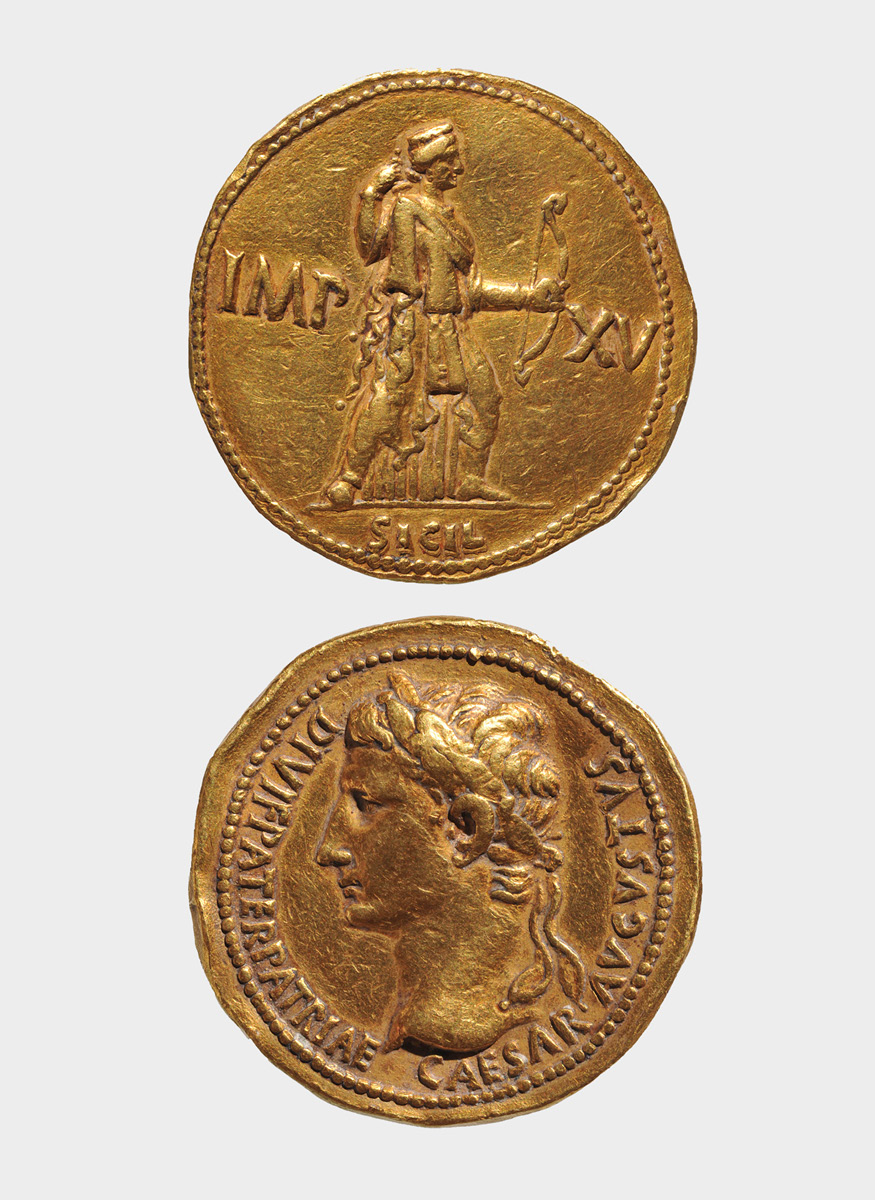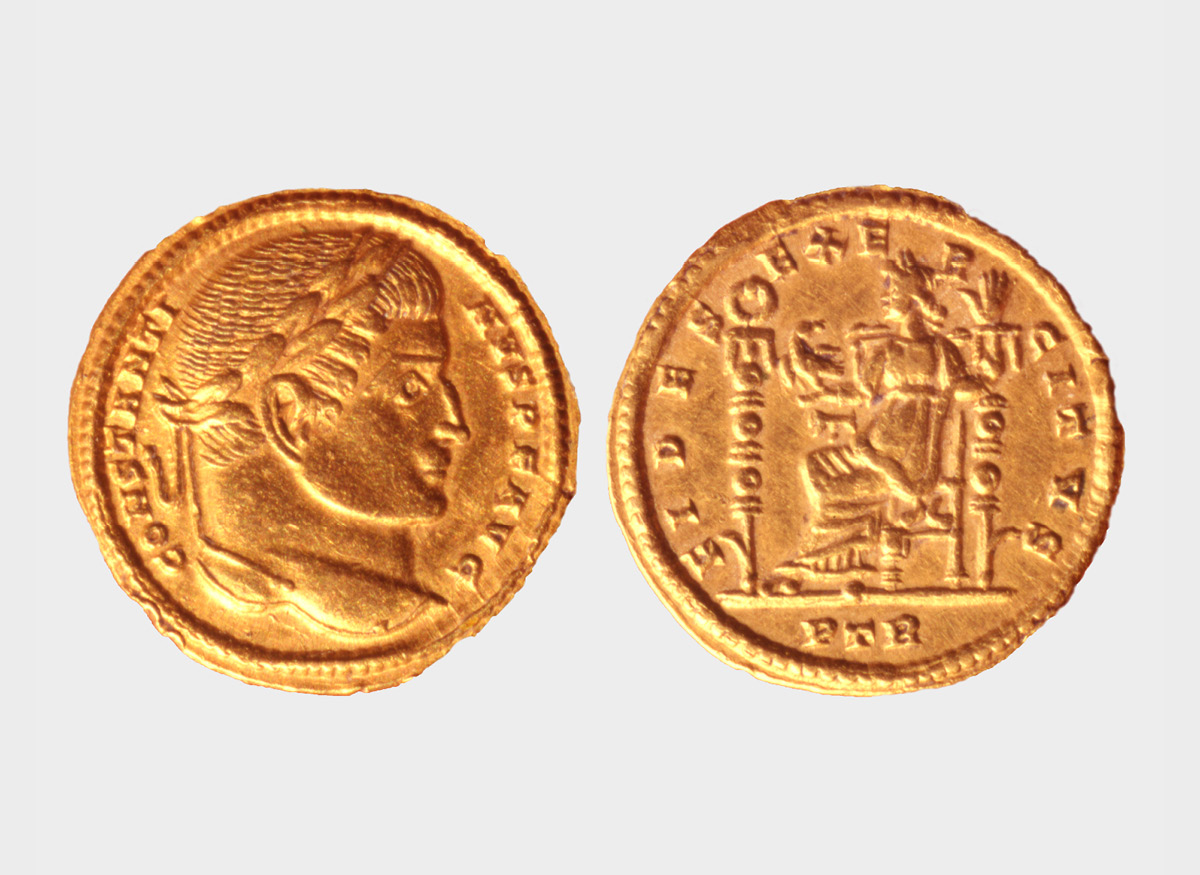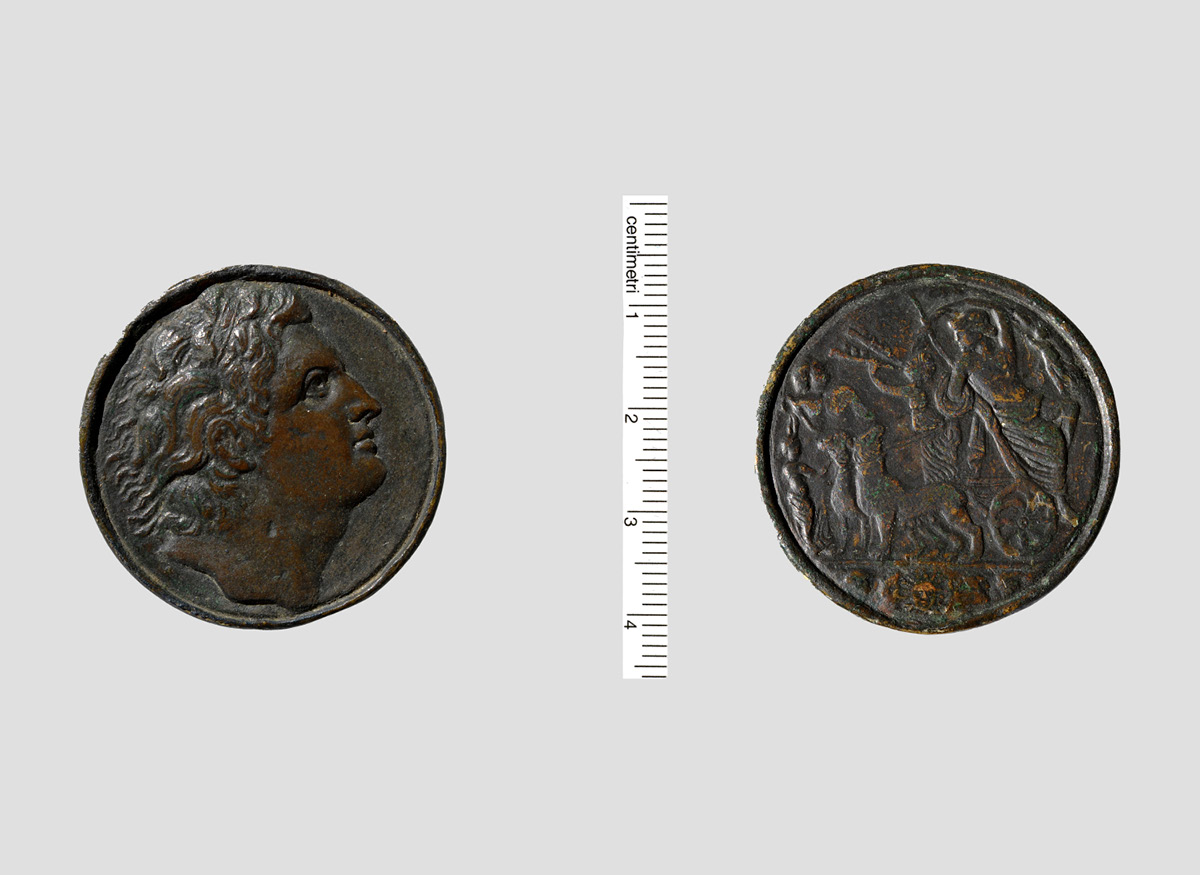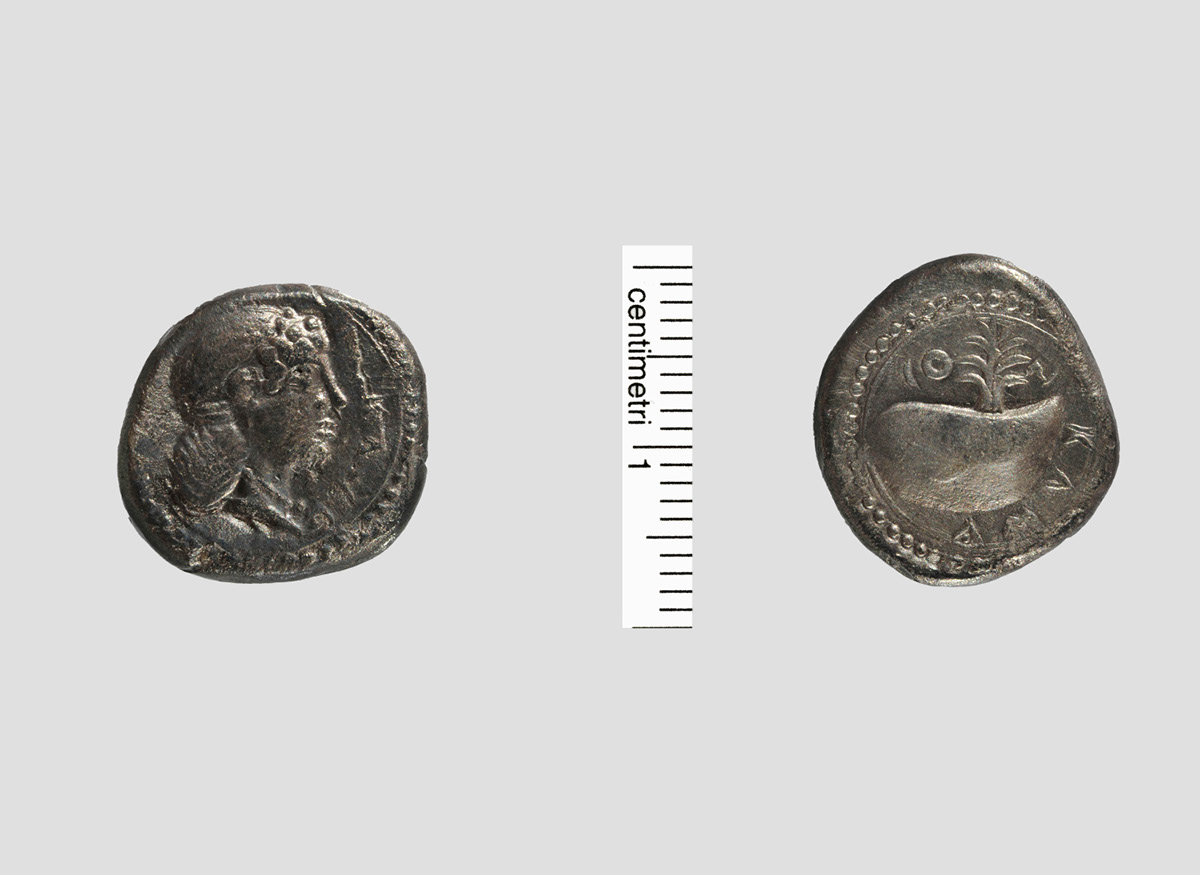Numismatic collection
The materials enshrined in the numismatic collection of the museum cover a large span of time, from the first coins minted in Magna Graecia to the examples issued in the Kingdom of the two Sicilies. They have become part of the museum heritage thanks to the acquisition of private collections, like the Farnese, the Borgia and the Santangelo ones, or as a consequence of the excavations carried out in the Vesuvian area and in Southern Italian regions.
The gallery has six rooms: the first room LI (51) introduces visitors to the history of numismatic studies, which started with collectors’ interest and evolved at one point into the modern concept of historical discipline. The display of next rooms LII-LVI (52-56), organized according to the town of provenience of the coins, in a chronological order, makes it possible to unroll the economic, political and social history of Southern Italy and of Sicily, highlighting the role played by the coin and its aspect in each archaeological context. The gallery emphasizes both the quantity and the quality of numismatic relics, in order to point out the variety and the richness of the collection, one of the most extensive in the whole world; but the display also includes other kinds of materials, such as reliefs, frescoes and books, in order to make it easier to understand the collection. A special place is occupied by the finds from the town of Pompeii, which provide information on the daily circulation of cash as well as on the production activities. In this section, indeed, visitors can admire the most famous piece of the collection, the golden coin of Augustus (room LIII - 53), which, as far as it is known, is a unicum. The Vesuvian tour goes on with the wax tablets from the House of Caecilius Iucundus, the relief representing the shop of a copper-cratsman, a pillar decorated with frescoes depicting scenes of a fullonica (laundry), the tackings of a thermopolium (restaurant), a safe, some of the golden jewels found in House of the Menander and a pile of coins belonging to the administrator of the same house.
After the Vesuvian focus, next rooms exhibit examples of coinage dating at the end of the Roman empire, going through the Barbarian invasions, the kingdom of Frederick II, the Middle Ages, up to the Modern Age; at the end, the exhibition focuses on Naples, which hosted various mints. The last room houses medallions with no legal tender, merely aimed at celebrating a person or a historical event, together with moulds and antique medal display cases, pieces of furniture with small drawers, used to enshrine coin collections.













